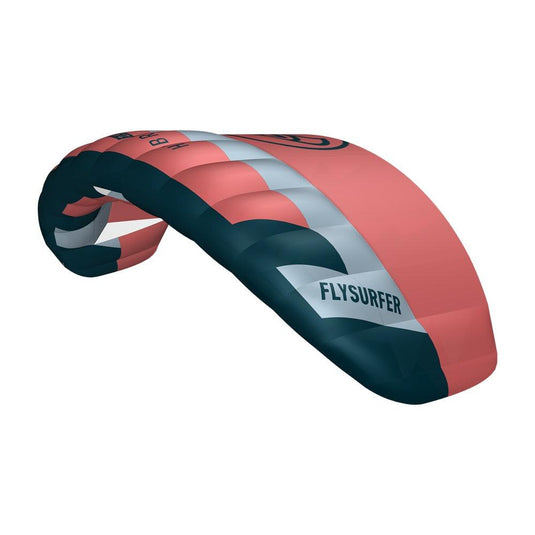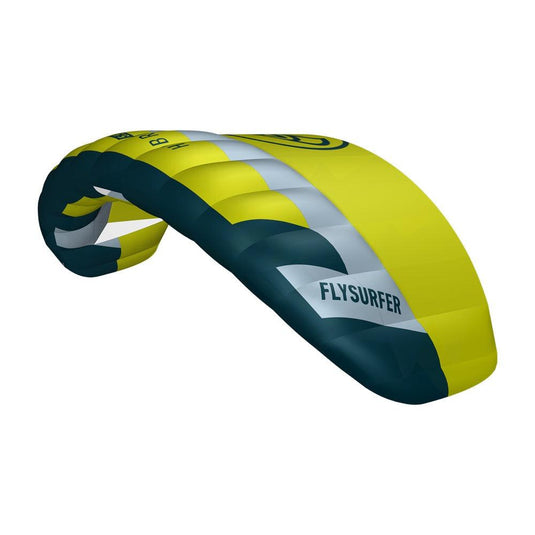
Foil Kites
Foil Kites | Kitesurfing
Foil kites, also known as ram-air kites, have a different structure compared to inflatable kites. They were initially developed for buggying and snow kiting with their design inspired by paragliders. The kites feature a fabric canopy with cells that inflate with air as the kite moves through the wind. The top canopy is connected to the lower canopy with cloth ribs to form the cells. This design allows the kite to maintain its shape without the need for inflatable tubes. These kites did not make much of an impression on the world of kiteboarding until an innovation occurred; the development of fully bridled depower ram air kites. These started to be more widely used around 2010.
In recent years, foil kites have gained popularity in kiteboarding, particularly with the rise of kite foiling. With their enhanced aerodynamics and the use of hydrofoil boards, this setup achieves remarkable speed, outpacing nearly all other sailing vessels, except for America's Cup foilers.There are two main types of foil kites: Open cell and Closed cell.
Open-Cell Foil Kites
Open-cell foil kites have air intakes that remain open, allowing air to enter and exit freely. They are lightweight, compact, and efficient in light winds, making them suitable for snow kiting and land-based kiteboarding, but less ideal for water use due to their inability to float.
Closed-Cell Foil Kites
Closed-cell foil kites have valves that close the air intakes, trapping air inside the kite, providing better water relaunch capabilities,. They are great for light wind kitesurfing and foiling, their efficiency in upwind performance and speed, make them extremely popular among hydrofoil racers.
The design of kiteboarding kites has come a long way since the sport first began. Today's kites feature cutting-edge materials, refined aerodynamic profiles, and robust safety systems. Foil kites are here to stay, they might require a bit more intuition, skill and experience to set up but they have superior performance in light winds, they generate more speed and power as well as better upwind ability. The choice between foil and inflatable kites often depends on the rider's experience level, preferred riding style, and local wind conditions. Many experienced riders choose to have both types in their quiver to adapt to various conditions and riding styles.Subscribe to our newsletter
Promotions, new products and sales. Directly to your inbox.















